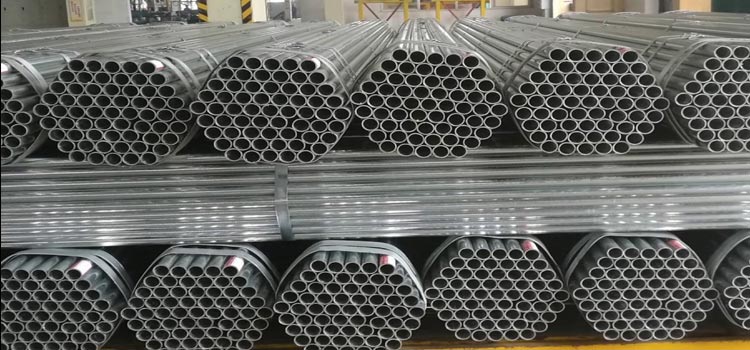Pipes
| Diameter (Inch) | Thickness (mm) | ||||||||
| 8 5/8 | 4.8 | 5.2 | 5.6 | 6.0 | 6.4 | 7.1 | 7.9 | 9.5 | 10 |
| 10 3/4 | 4.8 | 5.2 | 5.6 | 6.0 | 6.4 | 7.1 | 7.9 | 9.5 | 10 |
| 12 3/4 | 5.0 | 5.2 | 5.6 | 6.0 | 6.4 | 7.1 | 7.9 | 9.5 | 10 |
| 14 | 5.0 | 5.2 | 5.6 | 6.0 | 6.4 | 7.1 | 7.9 | 9.5 | 10 |
| 16 | 5.2 | 5.6 | 6.0 | 6.4 | 7.1 | 7.9 | 9.5 | 10 | |
| 18 | 5.2 | 5.6 | 6.0 | 6.4 | 7.1 | 7.9 | 9.5 | 10 | |
| Outer Diameter | |
|---|---|
| OD (Inch) | OD (mm) |
| 20 | 508 |
| 24 | 609.6 |
| 28 | 711.2 |
| 32 | 812.8 |
| 36 | 914.4 |
| 40 | 1016 |
| 44 | 1117.6 |
| 48 | 1219.2 |
| 52 | 1320.8 |
| 56 | 1422.4 |
| 60 | 1524.0 |
| 64 | 1625.6 |
ERW Pipes
ERW (Electrical Resistance Welding) pipes are manufactured by cold forming of steel coil into a round cylindrical shape. In the initial times it was done with the low frequency A.C. current to heat the edges. Now, since 1970 the low frequency process changed to high frequency A.C. current to produce a higher quality weld. ERW pipes have various applications like fencing, line pipe, scaffolding etc. ERW steel pipes are available in various diameters, wall thickness, finish and grades
Features of ERW pipe
1.Low cost: the low raw material cost and manufacturing cost make it prices more competitive than longitudinal seam submerged-arc welded pipes and seamless pipes.2.High Weld Seam Security: As a result of special welding method of melting parent metal together, without filler metal, the weld property is better than submerged-arc welded pipes; and the weld seam is much shorter than spiral seam welded pipes, the seam security is greatly improved.
3.Wide Range: ERW pipes can be applied with a wide range of thickness / diameter ratio, covering hundreds of specifications.
Seamless pipe
Seamless pipe as the name suggests is a pipe without a seam or a weld-joint in contrast to Seam or Welded pipe. In a Seam or Welded pipe, the seam or the weld-joint is the weaker part of the pipe limiting the strength of the pipe to the strength of the weld-joint. Whereas the seamless pipe does not have any such joint and thus has uniform structure & strength all over the pipe body. Thus the seamless pipe can withstand higher pressure, higher temperature, higher mechanical stress & corrosive atmosphere and find wide applications in Oil & Gas, Refinery, Petrochemical, Chemical, Fertilizer, Power, Automotive, Bearing, Mechanical & Structural applications.
Mild steel pipes
Mild steel pipes or MS pipes are used for the purpose of plumbing, firefighting, heating, ventilation and air conditioning. These pipes are perfectly suitable in several industries and various engineering applications. These pipes are manufactured using low carbon (less than0.25%) steel and that is the reason why they do not harden and are hassle-free and easy to use. MS pipes can also be welded to various shapes and sizes for the purpose of pipelining and tubing. These pipes are usually coated with metals, paints, varnish etc. to prevent it from rusting under extreme condition and make them long-lasting and durable.
Here are some of the salient Features of MS Pipes –
1.They feature high tensile strength and are extremely sturdy2.Contains a low percentage of carbon
3.It can be easily welded
4.Easy to fabricate and readily available 5.Best quality MS pipes ensure around 100 years of lifespan 6. Budget-friendly
Alloy Steel Pipe
Alloy steel piping components are designed with a range of alloying elements. The alloys in these pipes range from 1% up to 50%. The content of alloys help in determining the characteristics and properties of the components. The outstanding contents embedded in the Alloy Steel Pipe give these pipes superior corrosion and oxidation resistance across stress-induced systems. These pipes work well in a range of temperatures and pressure systems. They can be easily welded or threaded in place following standard procedures.
Stainless Steel Pipe
Stainless Steel Pipes are the most commonly used SS Pipes due to their chemical composition, mechanical properties, weldability, and corrosion/oxidation resistance. They provide the best all-around performance at a relatively low cost. Stainless steel Tubes have excellent corrosion resistance, superior resistance to oxidation and the retention of a larger fraction of room temperature strength.
Specifications- ASTM A 312 ASME SA 312 / ASTM A 358 ASME SA 358Dimensions- ASTM, ASME and API
SS - Pipes- 1/2″ NB – 16″ NB
ERW - Pipes- 1/2″ NB – 24″ NB
EFW - Pipes- 6″ NB – 100″ NB
Size- 1/8″NB TO 30″NB IN
Specialized in- Large Diameter Size
Schedule- SCH20, SCH30, SCH40, STD, SCH80, XS, SCH60, SCH80, SCH120, SCH140, SCH160, XXS






